
This post may contain links from our sponsors and affiliates, and Flywheel Publishing may receive
compensation for actions taken through them.
Getting paid to do what you love every day is a dream relatively few Americans are able to realize. Many of us manage to be content with our work, especially when receiving livable wages. Of course, there is also plenty of unenjoyable work — at low wages — that still needs to be done.
At one time in the United States, being employed was enough to stay out of poverty. From jobs programs implemented during President Lyndon Johnson’s “War on Poverty” in the 1960s to work subsidies and incentives introduced during President Bill Clinton’s welfare reform programs in the 1990s, the labor market has long been viewed as an anti-poverty vehicle.
However, in many parts of the country adding jobs, being employed is no longer enough to alleviate financial challenges. There were 7.6 million Americans in the labor force living in poverty in 2016. That level of in-work poverty has fluctuated over the years, but it remains roughly at the same level reported a decade ago.
The economy has added millions of jobs since the recession ended, but many of these jobs are not the same as those that were lost. Without looking at wages or in-work poverty statistics, strong employment growth does not tell the whole story.
Nationwide, retail trade and the accommodation and food services industry added over one million jobs over the past three years, accounting for 21.7% of total employment growth. In all but two of the cities on this list, these relatively low-paying industries accounted for a larger share of jobs added. But individuals working in these industries are among the most likely to earn poverty wages.
“If a job doesn’t pay enough to get you out of poverty, it’s not a desirable job,” said Marty Kohli, chief regional economist with the Bureau of Labor Statistics.
To find the cities adding mostly low-wage jobs, 24/7 Wall St. reviewed three-year employment level changes in the relatively low-paying industries of retail trade and food and accommodation, as well as the percentage of the labor force living in poverty in U.S. metropolitan statistical areas.
To be considered, a metro area’s retail trade and accommodation and food services industry employment growth between 2014 and 2017 needed to exceed the national average employment growth for those industries. Individuals working in these industries are among the most likely to earn poverty wages. Out of the nearly 100 MSAs that met this criteria, the 30 listed have the highest labor force poverty rates (the share of an area’s labor force earning below poverty level incomes). Data was obtained from the U.S. Bureau of Labor Statistics.
Click here to see the cities adding jobs nobody wants.

30. San Luis Obispo-Paso Robles-Arroyo Grande, CA
> Retail trade employment growth 2014-2017: 3.6%
> Accommodation & food services employment growth 2014-2017: 14.1%
> Total employment growth 2014-2017: 6.4%
> Labor force in poverty: 8.9%
> Average annual wage: $45,796
[in-text-ad]

29. Prescott, AZ
> Retail trade employment growth 2014-2017: 5.4%
> Accommodation & food services employment growth 2014-2017: 18.4%
> Total employment growth 2014-2017: 9.3%
> Labor force in poverty: 9.0%
> Average annual wage: $38,564

28. Ocala, FL
> Retail trade employment growth 2014-2017: 5.9%
> Accommodation & food services employment growth 2014-2017: 12.9%
> Total employment growth 2014-2017: 6.9%
> Labor force in poverty: 9.0%
> Average annual wage: $37,240

27. Boulder, CO
> Retail trade employment growth 2014-2017: 6.0%
> Accommodation & food services employment growth 2014-2017: 9.9%
> Total employment growth 2014-2017: 6.4%
> Labor force in poverty: 9.0%
> Average annual wage: $64,820
[in-text-ad-2]

26. Jackson, TN
> Retail trade employment growth 2014-2017: 3.7%
> Accommodation & food services employment growth 2014-2017: 14.0%
> Total employment growth 2014-2017: 5.9%
> Labor force in poverty: 9.1%
> Average annual wage: $41,776

25. Salem, OR
> Retail trade employment growth 2014-2017: 9.0%
> Accommodation & food services employment growth 2014-2017: 13.4%
> Total employment growth 2014-2017: 9.3%
> Labor force in poverty: 9.1%
> Average annual wage: $43,769
[in-text-ad]

24. Grants Pass, OR
> Retail trade employment growth 2014-2017: 12.1%
> Accommodation & food services employment growth 2014-2017: 18.5%
> Total employment growth 2014-2017: 11.6%
> Labor force in poverty: 9.2%
> Average annual wage: $35,921
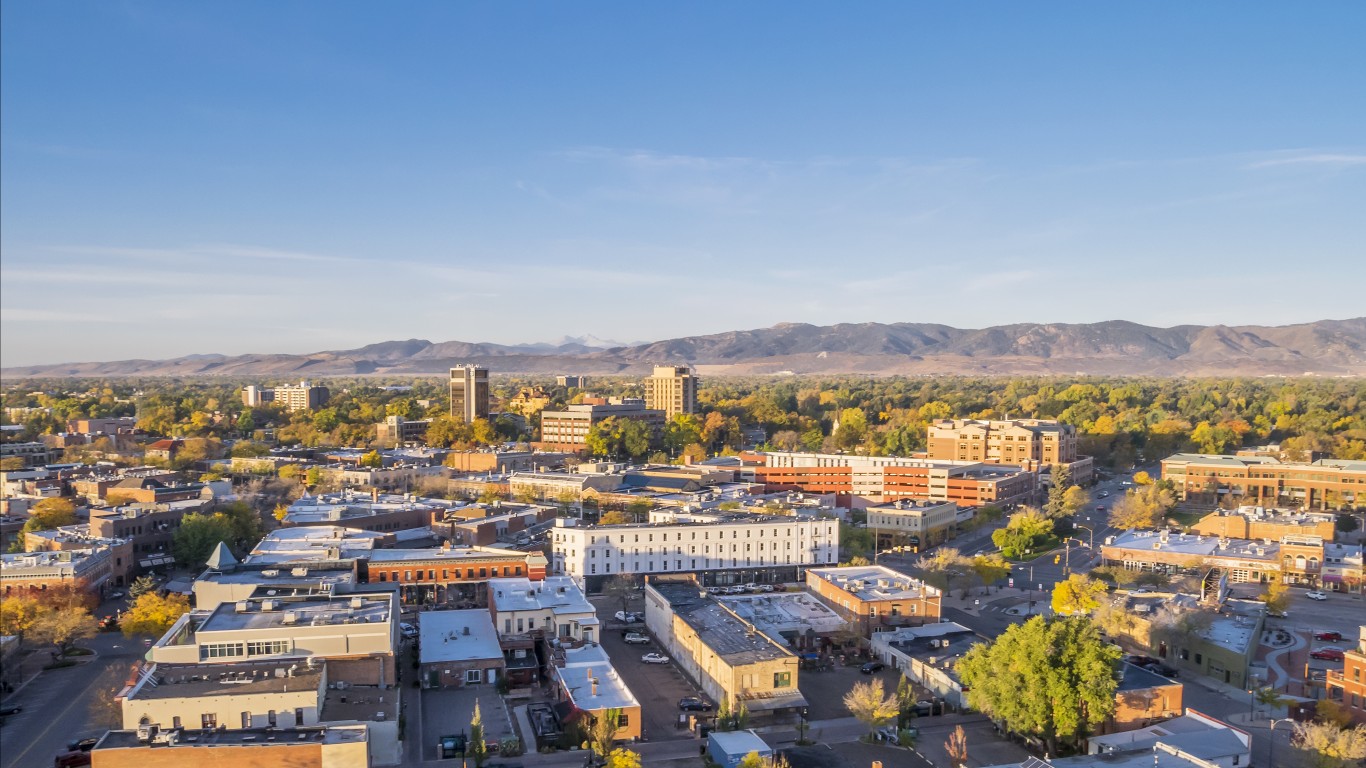
23. Fort Collins, CO
> Retail trade employment growth 2014-2017: 9.6%
> Accommodation & food services employment growth 2014-2017: 11.1%
> Total employment growth 2014-2017: 11.3%
> Labor force in poverty: 9.4%
> Average annual wage: $50,236

22. Gulfport-Biloxi-Pascagoula, MS
> Retail trade employment growth 2014-2017: 6.2%
> Accommodation & food services employment growth 2014-2017: 19.7%
> Total employment growth 2014-2017: 1.5%
> Labor force in poverty: 9.5%
> Average annual wage: $42,407
[in-text-ad-2]
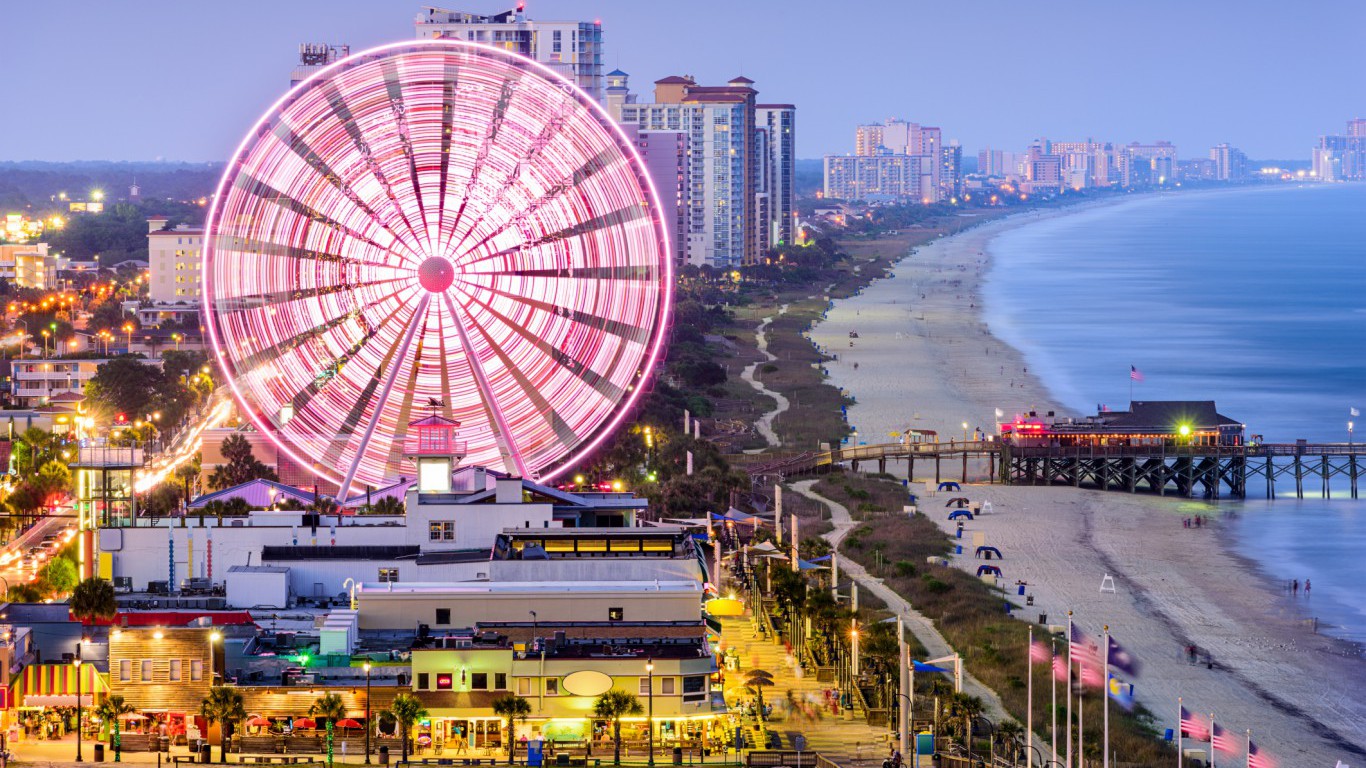
21. Myrtle Beach-Conway-North Myrtle Beach, SC-NC
> Retail trade employment growth 2014-2017: 6.9%
> Accommodation & food services employment growth 2014-2017: 11.1%
> Total employment growth 2014-2017: 9.9%
> Labor force in poverty: 9.7%
> Average annual wage: $34,194
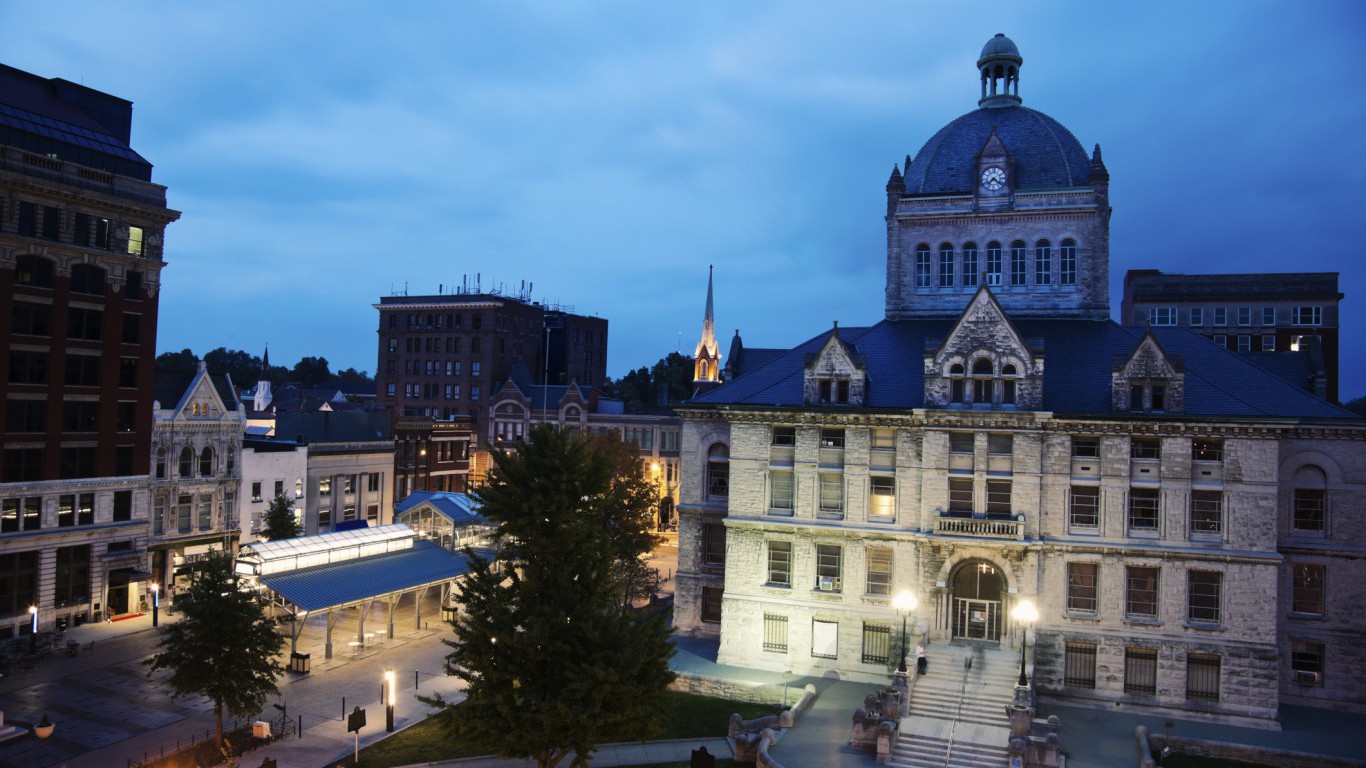
20. Lexington-Fayette, KY
> Retail trade employment growth 2014-2017: 5.2%
> Accommodation & food services employment growth 2014-2017: 10.7%
> Total employment growth 2014-2017: 6.0%
> Labor force in poverty: 9.8%
> Average annual wage: $47,156
[in-text-ad]

19. Yakima, WA
> Retail trade employment growth 2014-2017: 7.8%
> Accommodation & food services employment growth 2014-2017: 14.0%
> Total employment growth 2014-2017: 6.6%
> Labor force in poverty: 9.9%
> Average annual wage: $38,333

18. Wilmington, NC
> Retail trade employment growth 2014-2017: 5.1%
> Accommodation & food services employment growth 2014-2017: 13.5%
> Total employment growth 2014-2017: 8.6%
> Labor force in poverty: 9.9%
> Average annual wage: $43,633
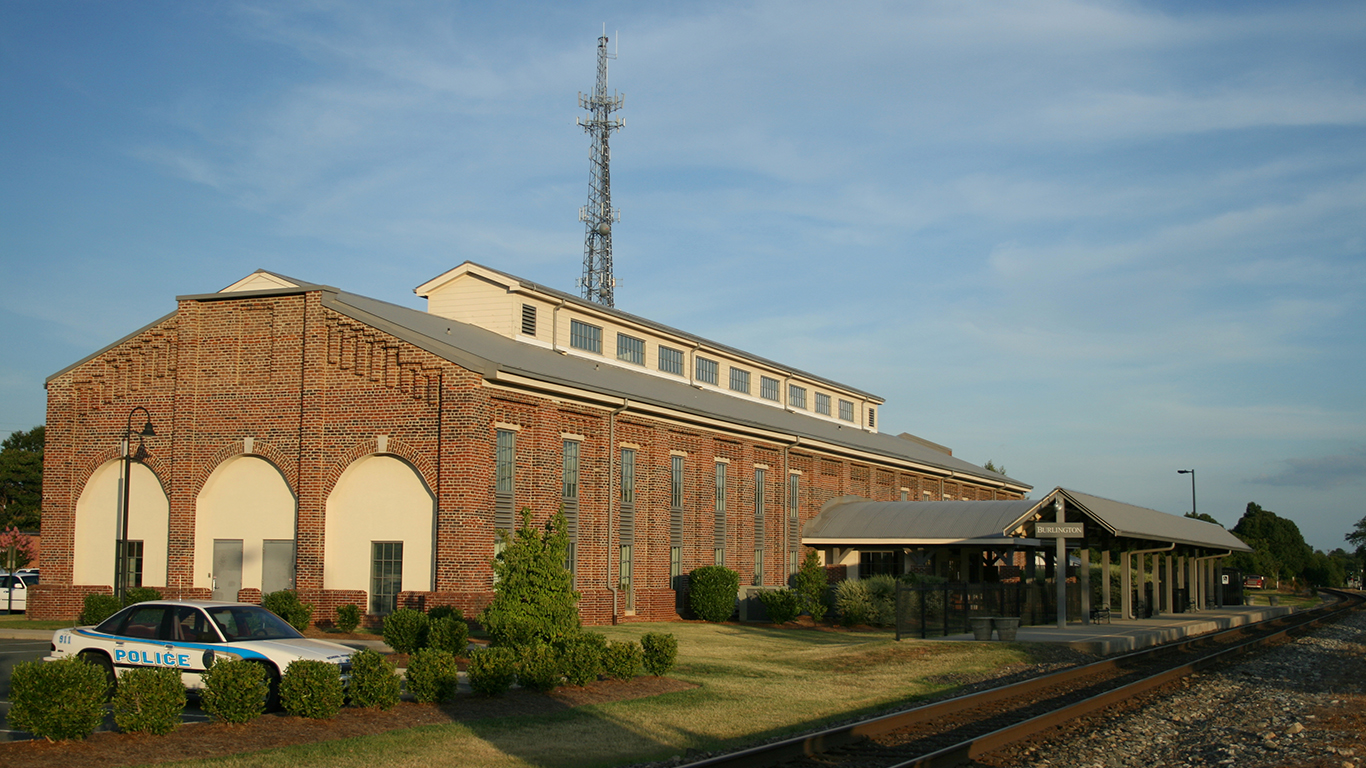
17. Burlington, NC
> Retail trade employment growth 2014-2017: 10.6%
> Accommodation & food services employment growth 2014-2017: 12.3%
> Total employment growth 2014-2017: 4.2%
> Labor force in poverty: 10.0%
> Average annual wage: $40,038
[in-text-ad-2]
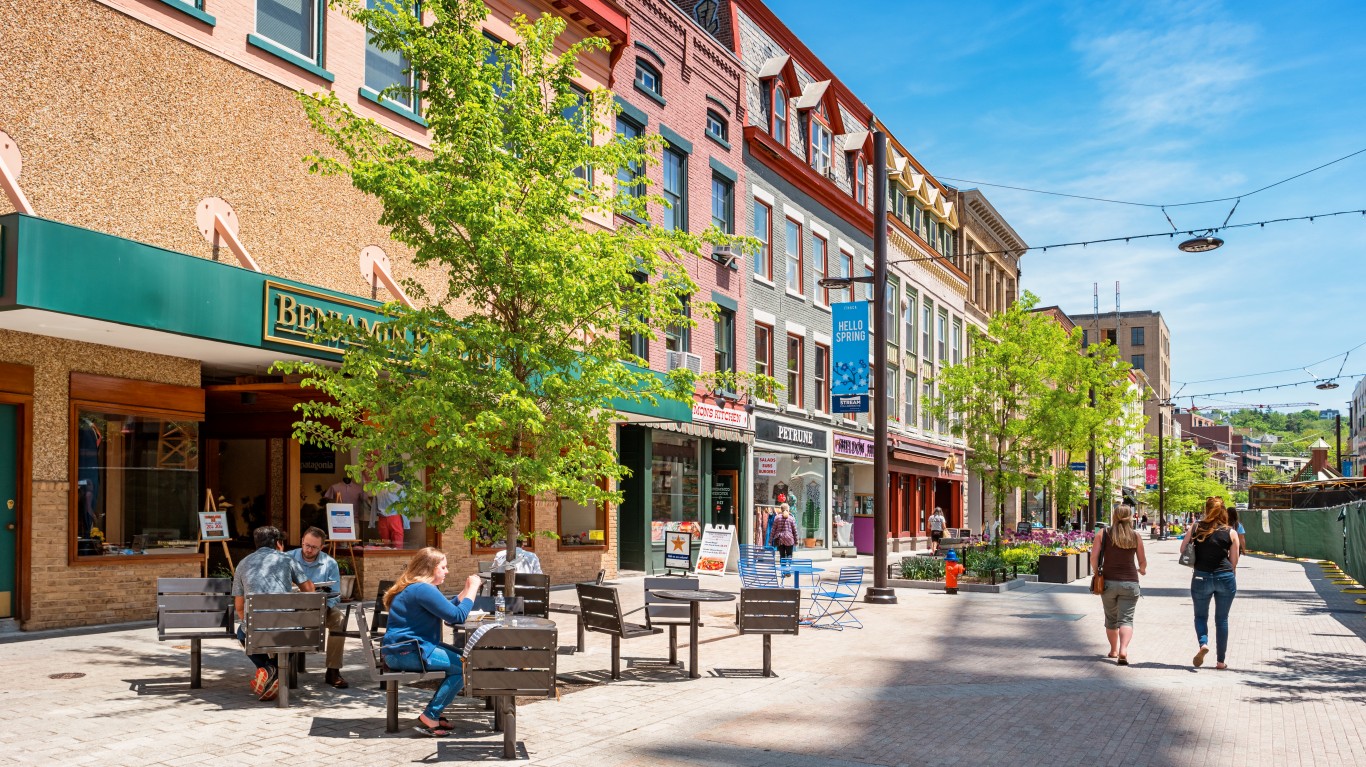
16. Ithaca, NY
> Retail trade employment growth 2014-2017: 3.7%
> Accommodation & food services employment growth 2014-2017: 8.8%
> Total employment growth 2014-2017: 3.0%
> Labor force in poverty: 10.0%
> Average annual wage: $52,901
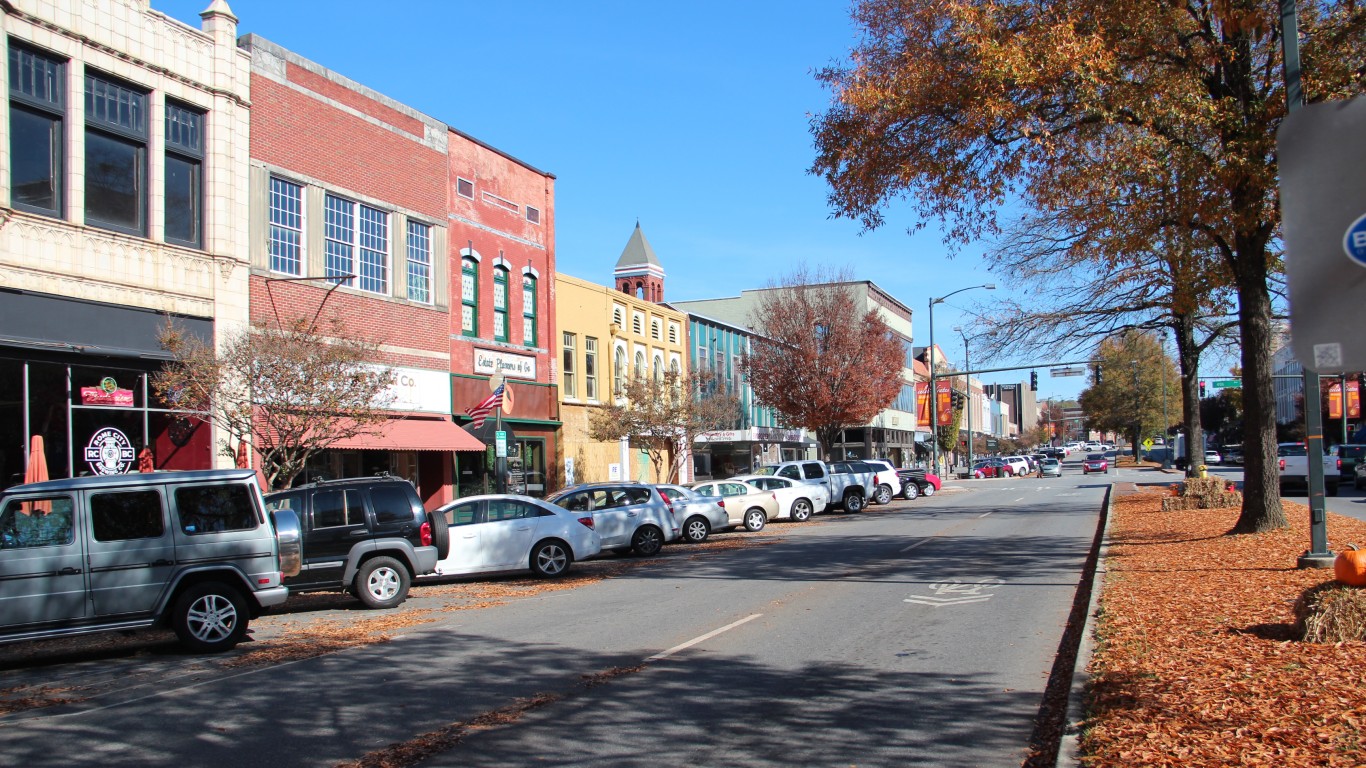
15. Rome, GA
> Retail trade employment growth 2014-2017: 3.4%
> Accommodation & food services employment growth 2014-2017: 11.3%
> Total employment growth 2014-2017: 3.7%
> Labor force in poverty: 10.3%
> Average annual wage: $41,629
[in-text-ad]

14. Lake Havasu City-Kingman, AZ
> Retail trade employment growth 2014-2017: 6.7%
> Accommodation & food services employment growth 2014-2017: 35.8%
> Total employment growth 2014-2017: 7.1%
> Labor force in poverty: 10.5%
> Average annual wage: $37,274

13. Madera, CA
> Retail trade employment growth 2014-2017: 5.3%
> Accommodation & food services employment growth 2014-2017: 11.6%
> Total employment growth 2014-2017: 1.4%
> Labor force in poverty: 10.6%
> Average annual wage: $42,212

12. Hammond, LA
> Retail trade employment growth 2014-2017: 4.8%
> Accommodation & food services employment growth 2014-2017: 13.4%
> Total employment growth 2014-2017: 5.1%
> Labor force in poverty: 11.1%
> Average annual wage: $35,353
[in-text-ad-2]

11. Medford, OR
> Retail trade employment growth 2014-2017: 10.1%
> Accommodation & food services employment growth 2014-2017: 15.5%
> Total employment growth 2014-2017: 9.6%
> Labor force in poverty: 11.3%
> Average annual wage: $41,404

10. Bakersfield, CA
> Retail trade employment growth 2014-2017: 7.6%
> Accommodation & food services employment growth 2014-2017: 9.1%
> Total employment growth 2014-2017: 1.4%
> Labor force in poverty: 11.4%
> Average annual wage: $45,031
[in-text-ad]
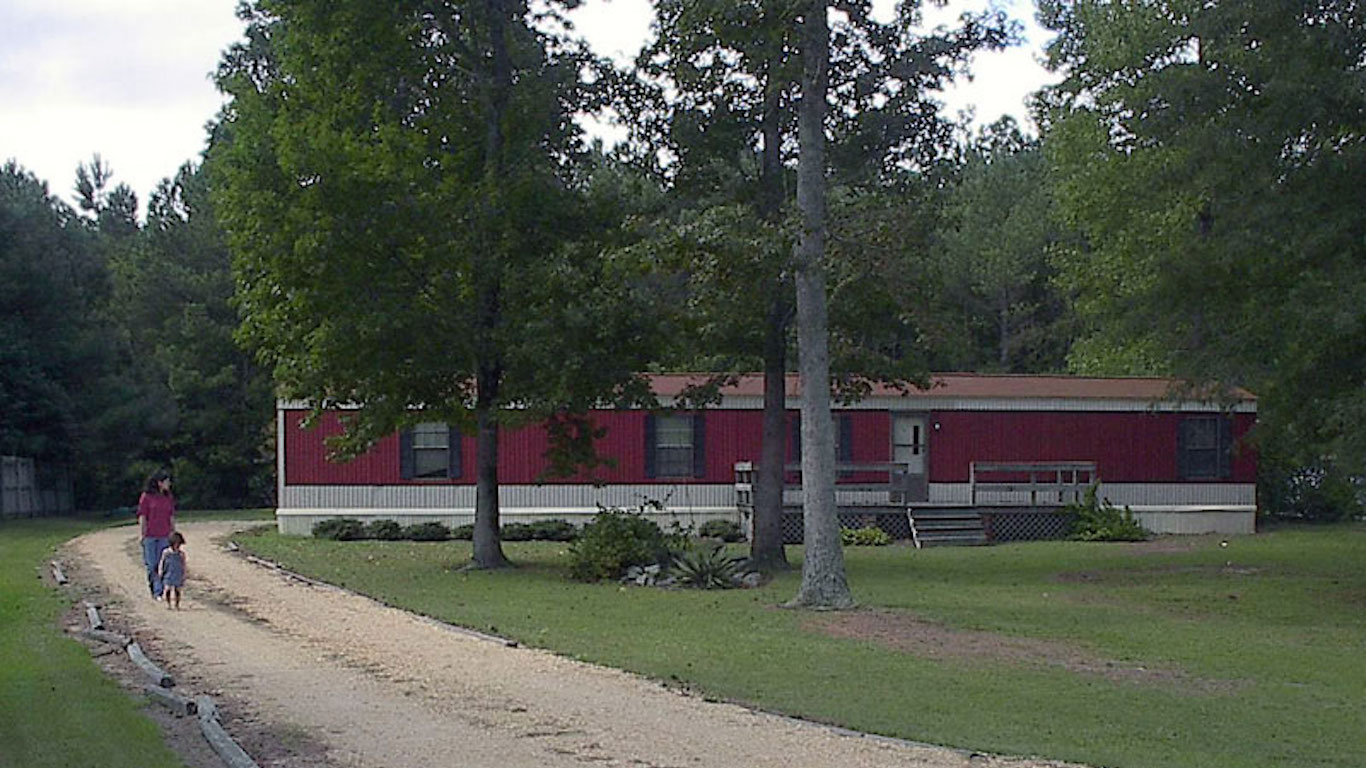
9. Goldsboro, NC
> Retail trade employment growth 2014-2017: 5.7%
> Accommodation & food services employment growth 2014-2017: 11.2%
> Total employment growth 2014-2017: -0.5%
> Labor force in poverty: 11.7%
> Average annual wage: $36,348

8. Yuma, AZ
> Retail trade employment growth 2014-2017: 10.2%
> Accommodation & food services employment growth 2014-2017: 9.5%
> Total employment growth 2014-2017: 3.5%
> Labor force in poverty: 12.0%
> Average annual wage: $38,021
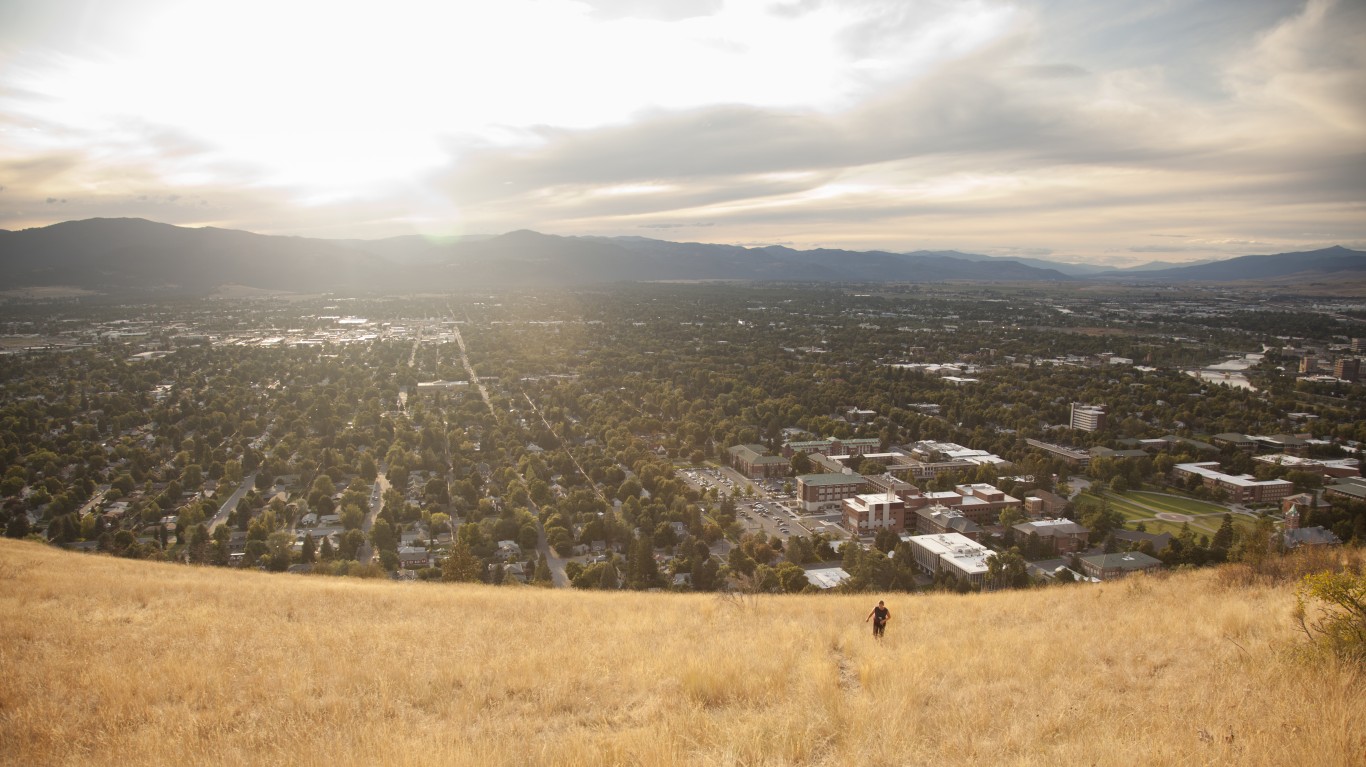
7. Missoula, MT
> Retail trade employment growth 2014-2017: 5.4%
> Accommodation & food services employment growth 2014-2017: 10.6%
> Total employment growth 2014-2017: 5.8%
> Labor force in poverty: 12.1%
> Average annual wage: $40,886
[in-text-ad-2]

6. Sebring, FL
> Retail trade employment growth 2014-2017: 8.5%
> Accommodation & food services employment growth 2014-2017: 11.2%
> Total employment growth 2014-2017: 5.2%
> Labor force in poverty: 12.4%
> Average annual wage: $33,824
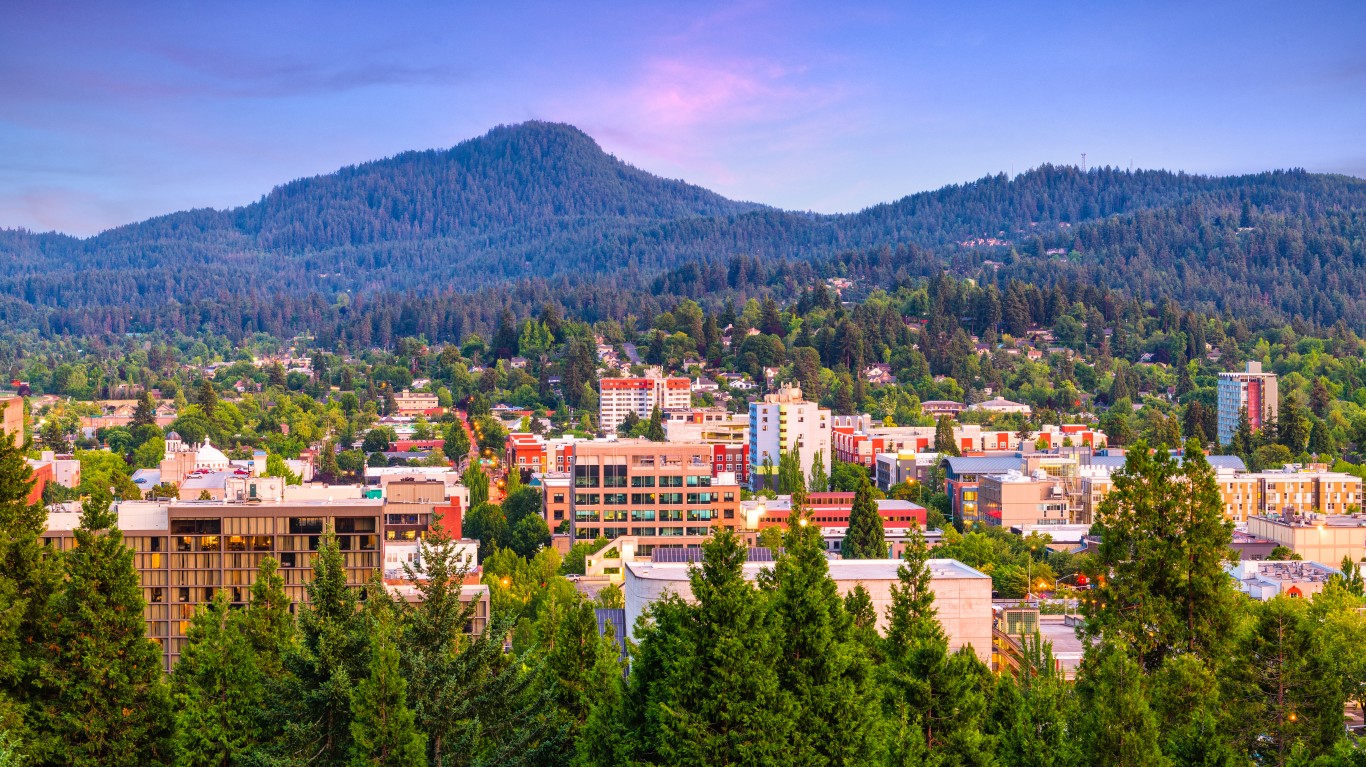
5. Eugene, OR
> Retail trade employment growth 2014-2017: 7.2%
> Accommodation & food services employment growth 2014-2017: 11.7%
> Total employment growth 2014-2017: 8.8%
> Labor force in poverty: 12.6%
> Average annual wage: $42,667
[in-text-ad]

4. Auburn-Opelika, AL
> Retail trade employment growth 2014-2017: 8.2%
> Accommodation & food services employment growth 2014-2017: 15.6%
> Total employment growth 2014-2017: 8.6%
> Labor force in poverty: 13.4%
> Average annual wage: $38,574
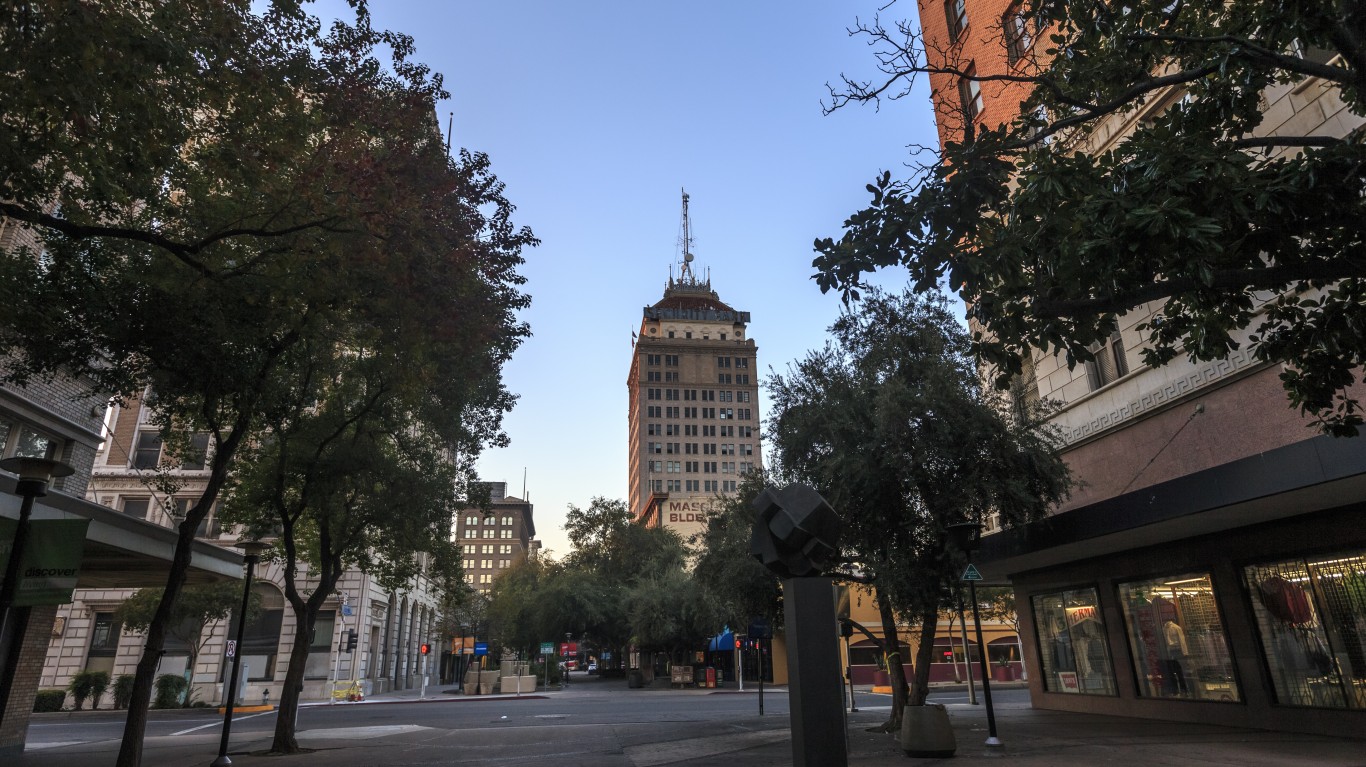
3. Fresno, CA
> Retail trade employment growth 2014-2017: 6.1%
> Accommodation & food services employment growth 2014-2017: 11.0%
> Total employment growth 2014-2017: 7.7%
> Labor force in poverty: 13.4%
> Average annual wage: $42,900

2. Chico, CA
> Retail trade employment growth 2014-2017: 11.2%
> Accommodation & food services employment growth 2014-2017: 9.8%
> Total employment growth 2014-2017: 8.3%
> Labor force in poverty: 14.1%
> Average annual wage: $41,099
[in-text-ad-2]

1. Corvallis, OR
> Retail trade employment growth 2014-2017: 10.1%
> Accommodation & food services employment growth 2014-2017: 9.5%
> Total employment growth 2014-2017: 7.3%
> Labor force in poverty: 16.0%
> Average annual wage: $50,089
Want to Retire Early? Start Here (Sponsor)
Want retirement to come a few years earlier than you’d planned? Or are you ready to retire now, but want an extra set of eyes on your finances?
Now you can speak with up to 3 financial experts in your area for FREE. By simply clicking here you can begin to match with financial professionals who can help you build your plan to retire early. And the best part? The first conversation with them is free.
Click here to match with up to 3 financial pros who would be excited to help you make financial decisions.
Have questions about retirement or personal finance? Email us at [email protected]!
By emailing your questions to 24/7 Wall St., you agree to have them published anonymously on a673b.bigscoots-temp.com.
By submitting your story, you understand and agree that we may use your story, or versions of it, in all media and platforms, including via third parties.
Thank you for reading! Have some feedback for us?
Contact the 24/7 Wall St. editorial team.
 24/7 Wall St.
24/7 Wall St. 24/7 Wall St.
24/7 Wall St.


